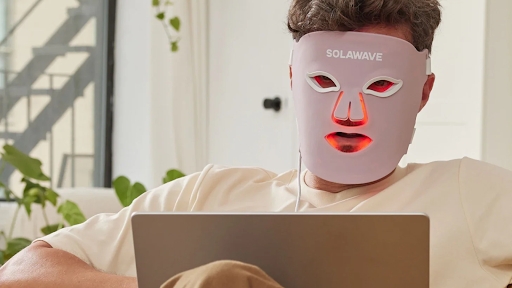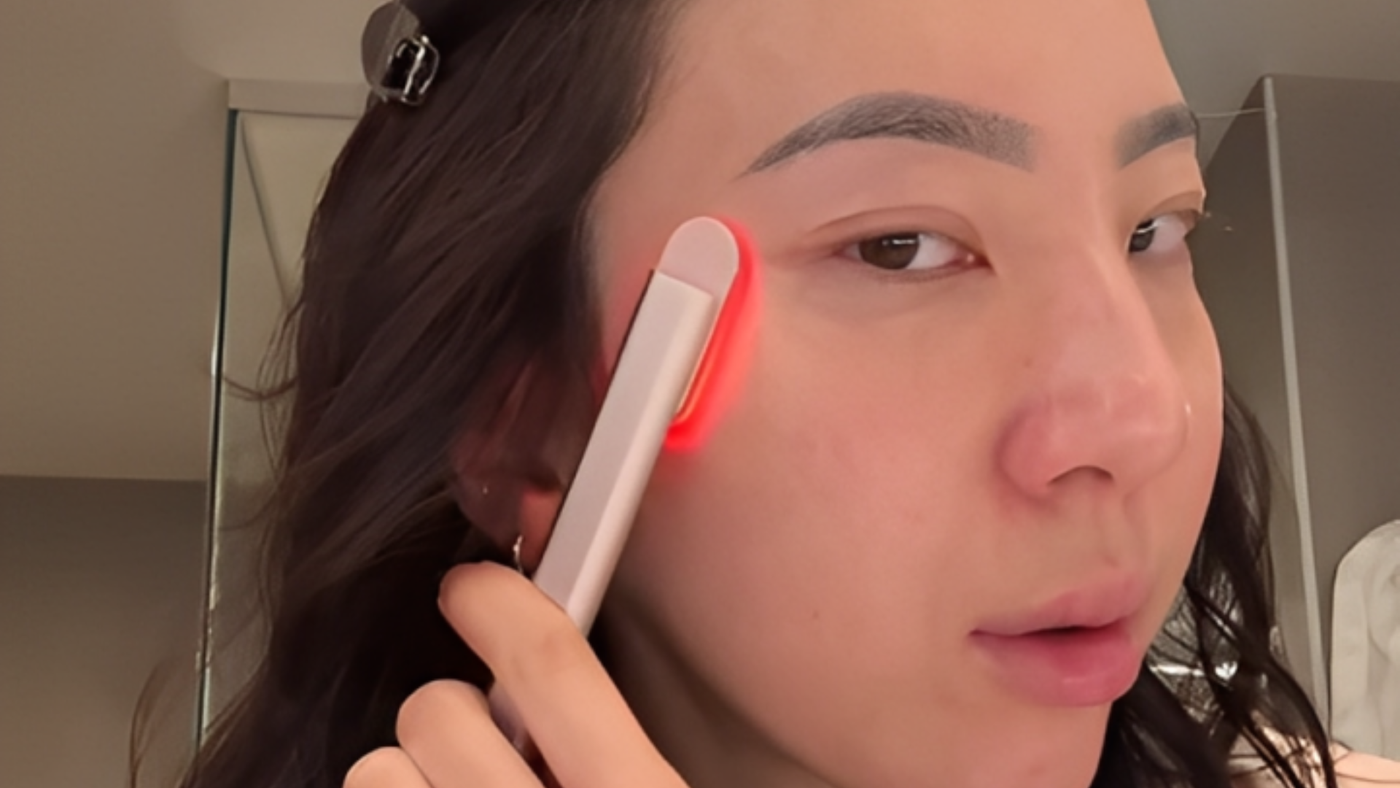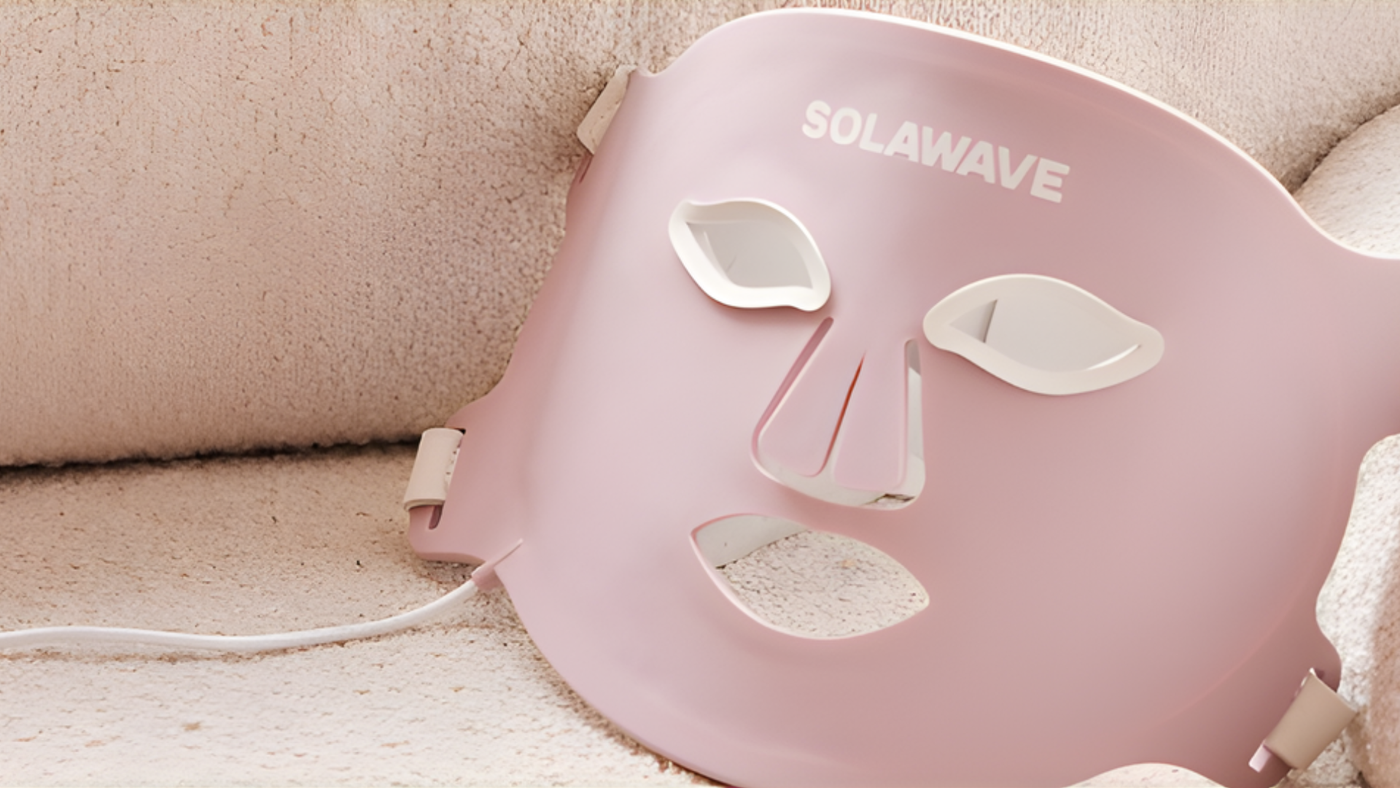

How Red Light Therapy Works to Treat Keratosis Pilaris: A Non-Invasive Solution
Dealing with keratosis pilaris, often called "chicken skin," can be a persistent frustration. Those small, rough bumps, typically on the arms, thighs, or cheeks, are harmless but can make you feel self-conscious. If you've tried countless scrubs and lotions with little success, you might be looking for a different approach. A modern, non-invasive method is gaining attention for its gentle effectiveness: red light therapy for keratosis pilaris. This guide explains how this science-backed treatment can help you achieve smoother, clearer-looking skin from the comfort of your home.
What Exactly is Keratosis Pilaris?
Keratosis Pilaris (KP) is a very common skin condition affecting up to 40% of adults and even more adolescents. It occurs when keratin, a protein that protects your skin, builds up and clogs hair follicles. This blockage creates the tiny, sandpaper-like bumps characteristic of KP. Essentially, your body produces too much of this protein, and it forms hard plugs inside the hair follicles.
While it’s often genetic, meaning it can run in families, external factors can also make it more noticeable. Dry skin is a major contributor, as it can make the bumps feel rougher and appear more prominent. Likewise, cold weather and low humidity can strip moisture from the skin, exacerbating the condition. The bumps might be skin-colored, or they can appear red and inflamed due to irritation, which is why managing the condition involves addressing both the texture and the underlying inflammation.
The Limits of Traditional KP Treatments
Many people turn to traditional methods to manage KP, but these often provide temporary relief rather than a lasting solution. These commonly include:
Topical Exfoliants
Creams and lotions containing acids like salicylic, lactic, or glycolic acid are widely used to help break down and remove the excess keratin plugs. While they can be effective for some, they often require continuous, daily use to maintain results. For many customers, this can become a tedious and costly cycle. Furthermore, these acids can be harsh, sometimes causing irritation, dryness, or redness, especially for those with sensitive skin.
Heavy Moisturizers
Keeping the skin hydrated with thick creams and ointments can soften the bumps and make the skin feel smoother. However, this is usually a temporary fix that addresses the symptom of dryness without targeting the root cause of keratin buildup and inflammation. Once you stop moisturizing, the rough texture often returns quickly.
Prescription Retinoids
Derived from Vitamin A, these creams can help promote skin cell turnover, theoretically preventing the follicles from getting clogged. However, like chemical exfoliants, they are known to cause significant irritation, peeling, and sun sensitivity. It can take months of consistent use to see noticeable results, and the side effects can be discouraging for many.
These solutions can help manage KP, but they often fall short of providing a complete and gentle fix, leading many to seek a better alternative that works in harmony with their skin.
A Gentle Approach: Red Light Treatment for Chicken Skin
This is where a red light treatment for chicken skin offers a promising alternative. Unlike harsh scrubs that can cause micro-tears or potentially irritating chemicals, red light therapy is a gentle treatment that works with your body's natural processes. It uses specific wavelengths of light to work on a cellular level, helping to improve skin health from the inside out without any downtime or discomfort. At-home options like those from Solawave make this advanced technology accessible, allowing you to incorporate a spa-quality treatment into your regular routine safely and effectively.
How Does Light Therapy Work for KP? The Science Simplified
The effectiveness of red light therapy comes down to its unique interaction with our cells. The red light therapy mechanism is not about scraping away the surface layer of skin; it’s about creating a healthier, more balanced environment for your skin to repair and regenerate itself. Here’s a simple breakdown of how this fascinating process, known as photobiomodulation, works to combat KP.
Powering Up Your Skin Cells
At the heart of every cell in your body are mitochondria, often called the cellular "powerhouses." Their primary job is to produce energy in the form of adenosine triphosphate (ATP), which fuels all cellular activities. Red light therapy, using specific wavelengths (like 630nm), penetrates the skin and is absorbed by light-sensitive molecules within these mitochondria. This absorption gives them a significant boost, helping them produce more ATP. With more energy at their disposal, skin cells can function more efficiently, repair damage, and rejuvenate themselves more effectively, leading to healthier skin from the ground up.
Calming Inflammation and Redness
A significant part of KP's appearance is the persistent redness and inflammation around the clogged follicles. This is where red light therapy truly shines as a treatment. It has powerful and well-documented anti-inflammatory properties, helping to calm this irritation and soothe the skin. By reducing inflammation, the red light treatment for chicken skin makes the bumps appear less angry and noticeable, promoting a more even and balanced skin tone. This is a key advantage over exfoliants, which can sometimes increase redness.
Improving Skin Texture and Repair
The extra cellular energy generated by red light therapy also stimulates the production of collagen and elastin—the essential proteins responsible for your skin's firmness, structure, and smoothness. An increase in collagen helps to remodel and strengthen the skin, improving its overall texture over time and making it feel softer and look healthier. By supporting the skin's natural healing and turnover processes, red light therapy helps your body manage the keratin buildup more effectively, leading to progressively smoother skin. The entire red light therapy mechanism is geared toward helping your skin restore its own balance.
Building Your At-Home KP Treatment Plan
Integrating red light therapy for keratosis pilaris into your life is simple and convenient, especially with today's advanced at-home devices. The key to seeing meaningful and lasting results is creating a consistent routine that you can stick with.
Consistency is the Cornerstone
Because KP is a persistent, often chronic condition, sporadic treatments won't deliver the changes you're looking for. Lasting improvement comes from regular and dedicated use. Experts recommend using red light therapy three to five times per week to achieve and maintain results. Sessions with Solawave devices are designed to be quick and easy. For instance, our award-winning red light therapy face mask, the Wrinkle Retreat Pro, provides a full treatment in just 3 minutes, making it incredibly simple to fit into your busy schedule. Consistent sessions are what help keep inflammation down and support ongoing skin health for long-term clarity.
Choosing Your Solawave Device
Solawave offers a range of innovative devices to target KP wherever it appears on your body.
For Face, Arms, and Thighs
The red light therapy wand is perfect for targeting KP on both the face and larger body areas. This innovative device combines four technologies: Red Light Therapy to improve firmness, Therapeutic Warmth to soothe skin, Galvanic Current to support hydration, and a gentle Facial Massage to energize the skin. For the best results, the wand must be used with a conductive, water-based serum, like our Lightboost Red Light Therapy Hyaluronic Serum, to ensure all four technologies work effectively.
For the Face
If you primarily experience KP on your cheeks, our hero product, the Wrinkle Retreat Pro LED Face Mask, offers a hands-free, full-face solution. It delivers four wavelengths of light—Amber, Red, Deep Red, and Near-Infrared—evenly across the face for comprehensive rejuvenation. We also offer a targeted red light therapy eye mask for the delicate skin around the eyes.
For the Neck and Chest
Don't forget the delicate skin on your neck and chest. The Red Light Therapy Neck & Chest Rejuvenating Skincare Mask is specifically designed for these areas, ensuring even treatment.
The Importance of Safe, Vetted Technology
When choosing an at-home device, safety is paramount. With more brands entering the market without proper vetting, customers can be exposed to products with murky safety protocols. It's important to purchase from a brand that prioritizes your well-being. At-home options like Solawave's are FDA-cleared, making them safe and reliable for regular use. This clearance means our devices have been rigorously reviewed for safety and efficacy, giving our customers complete peace of mind.
To make this investment even more accessible, many Solawave purchases may be eligible for coverage with FSA/HSA funds, making it a cost-effective choice for your long-term skin health.
A Holistic Path to Smoother Skin
While red light therapy is a powerful tool, it works best as part of a complete skincare routine that supports its effects. Think of it as a supportive treatment that enhances the efficacy of your other products, creating a comprehensive plan to tackle KP.
-
Gentle Cleansing: Start with a clean slate by using a mild, non-stripping cleanser. This removes any surface oils or debris without causing further irritation.
-
Red Light Therapy Session: Use your chosen Solawave device for the recommended time, typically 3-10 minutes per session. This is your core treatment step to reduce inflammation and promote cellular repair.
-
Hydrate and Moisturize: Follow up with products from our skincare line to lock in hydration and support your skin barrier. For the face and neck, our Lightboost Niacinamide Face and Neck Serum can help further even skin tone, followed by the Lightboost Face and Neck Cream to seal in moisture. If you have concerns around the eyes, the Lightboost Collagen Caffeine Eye Cream is an excellent addition. Gentle exfoliants can still be used on alternate days, but avoid using them right before a red light session to prevent potential irritation.
By combining these steps, you create a comprehensive plan that addresses KP from multiple angles. You can find everything you need to build your ideal routine on our Shop All page.
About Solawave
As a 30+ award-winning skincare brand, Solawave is focused on integrating light therapy with patented skincare technologies to create at-home rituals that are effective, science-backed, and FDA-cleared. Our mission is to make professional-grade treatments accessible to everyone. We are a celebrity-loved brand, recommended by top estheticians and dermatologists who trust our commitment to innovation and results.
What to Expect on Your Journey
Patience and consistency are your best friends when treating a stubborn condition like KP. While some people notice a reduction in redness and inflammation within a few weeks of consistent use, textural improvements can take longer as your skin goes through its renewal cycles. Stick with your routine, and over time, you can achieve visibly smoother and healthier-looking skin.
Join the thousands of happy customers and see why Solawave is loved by celebrities and recommended by dermatologists and estheticians. Follow us on Instagram to see real results and become part of our vibrant community.
Frequently Asked Questions
How long does it take for red light therapy to work on keratosis pilaris?
While some customers notice reduced redness in a few weeks, significant improvements in skin texture may take one to two months of consistent use, 3-5 times per week.
Can red light therapy make KP worse?
Red light therapy is a gentle treatment and is highly unlikely to make KP worse. It is non-invasive and does not use UV light, so there is no risk of sun damage.
Does sunlight help keratosis pilaris?
Some people notice a slight improvement in KP with sun exposure due to Vitamin D production, but too much sun can dry out the skin and worsen the condition in the long run. It's always best to use sunscreen.
Is at-home red light therapy for KP safe?
Yes, especially when you choose a reputable brand.
- Look for devices that are FDA-cleared, like Solawave's, which have been reviewed for safety and effectiveness.
- If you are pregnant, it is always best to consult with your doctor before starting any new treatment.
What's the best way to use red light therapy for KP?
For the best results, follow a consistent and holistic approach.
- Use your device 3–5 times per week for about 3-10 minutes per session.
- Pair the treatment with a gentle cleanser and a good moisturizer to keep your skin hydrated and support the skin barrier.





















